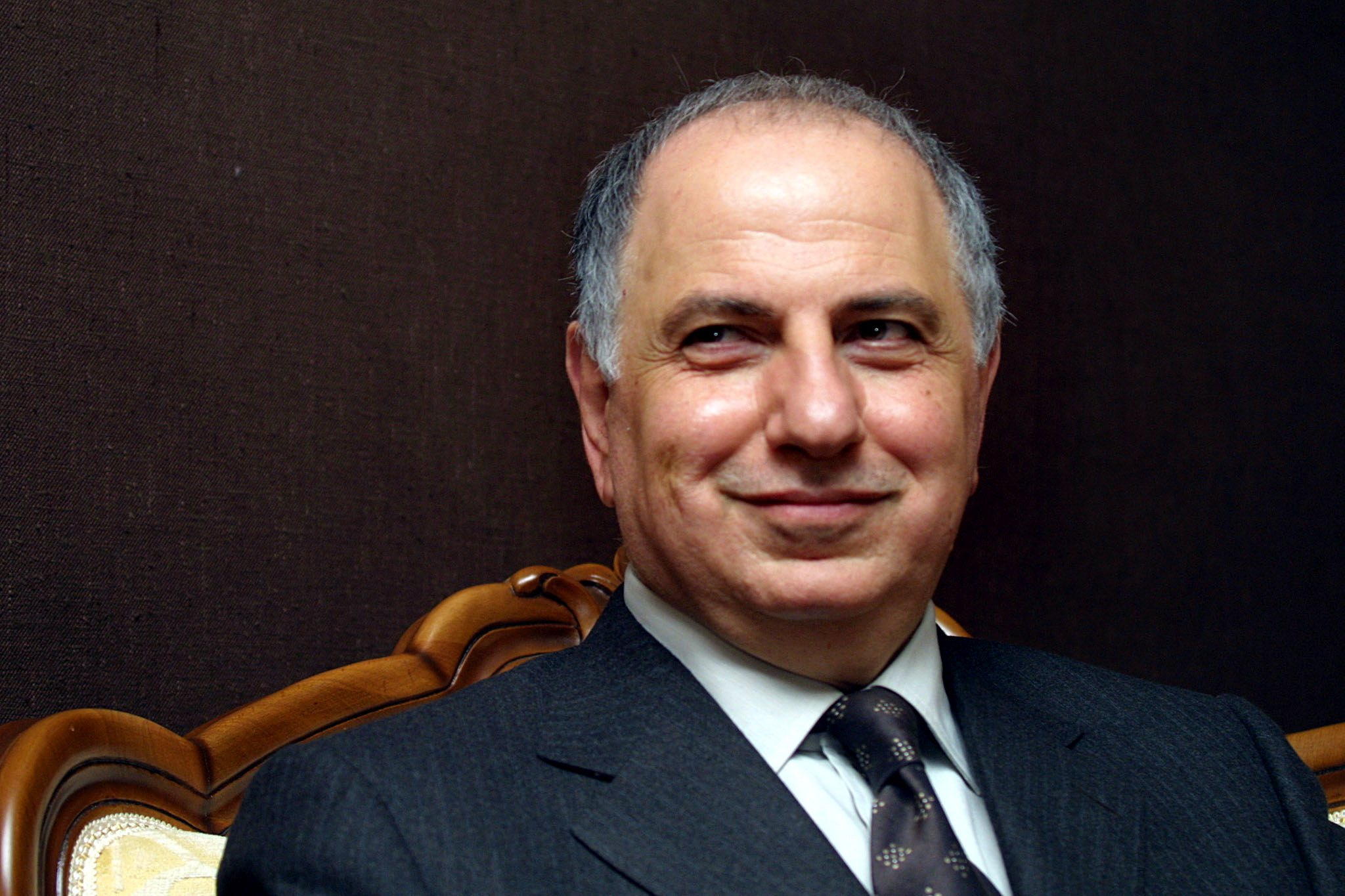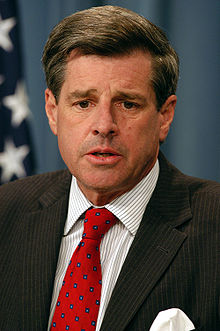March 24, 1999, Twenty years ago. NATO’s War on Yugoslavia
Bill Clinton supported Al Qaeda in Bosnia and Kosovo in the 1990s as confirmed by RPC Congressional documents; Hillary Clinton has supported Al Qaeda and the Islamic State (ISIS-Daesh) in Syria.
This article was first published in 2002.
* * *
Known and documented, since the Soviet-Afghan war, recruiting Mujahideen (“holy warriors”) to fight covert wars on Washington’s behest has become an integral part of US foreign policy.
A 1997 Congressional document by the Republican Party Committee (RPC), while intent upon smearing President Bill Clinton, nonetheless sheds light on the Clinton administration’s insidious role in recruiting and training jihadist mercenaries with a view to transforming Bosnia into a “Militant Islamic Base”.
In many regards, Bosnia and Kosovo (1998-1999) were “dress rehearsals” for the destabilization of the Middle East (Iraq, Libya, Syria, Yemen).
With regard to Syria, the recruitment of jihadists (according to Israeli intelligence sources) was launched prior to 2011 under the auspices of NATO and the Turkish High command in liaison with the Pentagon.
The RCP report reveals how the US administration – under advice from Clinton’s National Security Council headed by Anthony Lake – “helped turn Bosnia into a militant Islamic base” leading to the recruitment through the so-called “Militant Islamic Network,” of thousands of Mujahideen from the Muslim world:
Perhaps most threatening to the SFOR mission – and more importantly, to the safety of the American personnel serving in Bosnia – is the unwillingness of the Clinton Administration to come clean with the Congress and with the American people about its complicity in the delivery of weapons from Iran to the Muslim government in Sarajevo. That policy, personally approved by Bill Clinton in April 1994 at the urging of CIA Director-designate (and then-NSC chief) Anthony Lake and the U.S. ambassador to Croatia Peter Galbraith, has, according to the Los Angeles Times (citing classified intelligence community sources), “played a central role in the dramatic increase in Iranian influence in Bosnia.
 (…)
(…)
Along with the weapons, Iranian Revolutionary Guards and VEVAK intelligence operatives entered Bosnia in large numbers, along with thousands of mujahedin (“holy warriors”) from across the Muslim world. Also engaged in the effort were several other Muslim countries (including Brunei, Malaysia, Pakistan, Saudi Arabia, Sudan, and Turkey) and a number of radical Muslim organizations.
For example, the role of one Sudan-based “humanitarian organization,” called the Third World Relief Agency, has been well documented. The Clinton Administration’s “hands-on” involvement with the Islamic network’s arms pipeline included inspections of missiles from Iran by U.S. government officials… the Third World Relief Agency (TWRA), a Sudan-based, phoney humanitarian organization … has been a major link in the arms pipeline to Bosnia. … TWRA is believed to be connected with such fixtures of the Islamic terror network as Sheik Omar Abdel Rahman (the convicted mastermind behind the 1993 World Trade Center bombing) and Osama Bin Laden, a wealthy Saudi émigré believed to bankroll numerous militant groups. [Washington Post, 9/22/96] emphasis added
The Republican Party Committee report quoting official documents as well as US media sources confirms unequivocally the complicity of the Clinton Administration with several Islamic fundamentalist organisations including Osama bin Laden’s al Qaeda.
What was the ultimate purpose of this report?
The Republicans wanted at the time to undermine the Clinton Administration. However, at a time when the entire country had its eyes riveted on the Monica Lewinsky scandal, the Republicans no doubt chose not to trigger an untimely “Iran-Bosniagate” affair, which might have unduly diverted public attention away from the Lewinsky scandal.
The Republicans wanted to impeach Bill Clinton “for having lied to the American People” regarding his affair with White House intern Monica Lewinsky. On the more substantive “foreign policy lies” regarding covert operations involving the recruitment of “Jihadists” in the Balkans, Democrats and Republicans agreed in unison, no doubt pressured by the Pentagon and the CIA not to “spill the beans”. Clinton’s support of “jihadist” terrorist organizations in Bosnia and Kosovo was a continuation of the CIA sponsored recruitment of Mujahideen implemented throughout the 1980s in Afghanistan, under the helm of the CIA.

The “Bosnian pattern” described in the 1997 Congressional RPC report was then replicated in Kosovo. Among the foreign mercenaries fighting in Kosovo (and Macedonia in 2001) were Mujahideen from the Middle East and the Central Asian republics of the former Soviet Union as well as “soldiers of fortune” from several NATO countries including Britain, Holland and Germany.
Confirmed by British military sources, the task of arming and training of the KLA had been entrusted in 1998 to the US Defence Intelligence Agency (DIA) and Britain’s Secret Intelligence Services MI6, together with “former and serving members of 22 SAS [Britain’s 22nd Special Air Services Regiment], as well as three British and American private security companies”. (The Scotsman, Glasgow, 29 August 1999)
The US DIA approached MI6 to arrange a training programme for the KLA, said a senior British military source. `MI6 then sub-contracted the operation to two British security companies, who in turn approached a number of former members of the (22 SAS) regiment. Lists were then drawn up of weapons and equipment needed by the KLA.’ While these covert operations were continuing, serving members of 22 SAS Regiment, mostly from the unit’s D Squadron, were first deployed in Kosovo before the beginning of the bombing campaign in March. (ibid)
While British SAS Special Forces in bases in Northern Albania were training the KLA, military instructors from Turkey and Afghanistan financed by the “Islamic jihad” were collaborating in training the KLA in guerilla and diversion tactics. (Truth in Media, April 2, 1999)
Bin Laden had visited Albania himself. He was one of several fundamentalist groups that had sent units to fight in Kosovo, … Bin Laden is believed to have established an operation in Albania in 1994 … Albanian sources say Sali Berisha, who was then president, had links with some groups that later proved to be extreme fundamentalists. (Sunday Times, London, 29 November 1998, emphasis added).
Below is the complete text of the RPC congressional document, which confirms that the Clinton administration was collaborating with Al Qaeda. The actions taken by the Clinton administration were intended to create ethnic and factional divisions which eventually were conducive to the fracturing of the Yugoslav Federation.
In retrospect, the Obama Administration’s covert support of the ISIS in Syria and Iraq bears a canny resemblance to the Clinton administration’s support of the Militant Islamic Base in Bosnia and Kosovo. What this suggests is that US intelligence rather than the White House and the State Department determine the main thrust of US foreign policy, which consists in supporting and financing “Jihadist” terrorist organizations with a view to destabilizing sovereign countries.
Michel Chossudovsky, September 13, 2015, March 22, 2019
Note: the original Congressional document published by the office of Senator Larry Craig (ret) is no longer available
* * *
Help Turn Bosnia into Militant Islamic Base
Republican Party Committee, US Congress, September 1997
“‘There is no question that the policy of getting arms into Bosnia was of great assistance in allowing the Iranians to dig in and create good relations with the Bosnian government,’ a senior CIA officer told Congress in a classified deposition. ‘And it is a thing we will live to regret because when they blow up some Americans, as they no doubt will before this … thing is over, it will be in part because the Iranians were able to have the time and contacts to establish themselves well in Bosnia.”‘
“Iran Gave Bosnia Leader $ [“Iran Gave Bosnia Leader $ 500,000, CIA Alleges: Classified Report Says Izetbegovic Has Been ‘Co-Opted,’ Contradicting U.S. Public Assertion of Rift,” Los Angeles Times, 12/31/96. Ellipses in original. Alija Izetbegovic is the Muslim president of Bosnia.] “‘If you read President Izetbegovk’s writings, as I have, there is no doubt that he is an Islamic fundamentalist,’ said a senior Western diplomat with long experience in the region. ‘He is a very nice fundamentalist, but he is still a fundamentalist. This has not changed. His goal is to establish a Muslim state in Bosnia, and the Serbs and Croats understand this better than the rest of us.”‘ [“Bosnian Leader Hails Islam at Election Rallies,” New York Times, 9/2/96]
Introduction and Summary
In late 1995, President Bill Clinton dispatched some 20,000 U.S. troops to Bosnia-Hercegovina as part of a NATO-led “implementation force” (IFOR) to ensure that the warning Muslim, Serbian, and Croatian factions complied with provisions of the Dayton peace plan. [NOTE: This paper assumes the reader is acquainted with the basic facts of the Bosnian war leading to the IFOR deployment. For background, see RPC’s “Clinton Administration Ready to Send U.S. Troops to Bosnia, “9/28/95,” and Legislative Notice No. 60, “Senate to Consider Several Resolutions on Bosnia,” 12/12/95] Through statements by Administration spokesmen, notably Defense Secretary Perry and Joint Chiefs Chairman General Shalikashvili, the president firmly assured Congress and the American people that U S. personnel would be out of Bosnia at the end of one year. Predictably, as soon as the November 1996 election was safely behind him, President Clinton announced that approximately 8,5 00 U.S. troops would be remaining for another 18 months as part of a restructured and scaled down contingent, the “stabilization force” (SFOR), officially established on December 20, 1996.
SFOR begins its mission in Bosnia under a serious cloud both as to the nature of its mission and the dangers it will face. While IFOR had successfully accomplished its basic military task – separating the factions’ armed forces – there has been very little progress toward other stated goals of the Dayton agreement, including political and economic reintegration of Bosnia, return of refugees to their homes, and apprehension and prosecution of accused war criminals. It is far from certain that the cease-fire that has held through the past year will continue for much longer, in light of such unresolved issues as the status of the cities of Brcko (claimed by Muslims but held by the Serbs) and Mostar (divided between nominal Muslim and Croat allies, both of which are currently being armed by the Clinton Administration). Moreover, at a strength approximately one-third that of its predecessor, SFOR may not be in as strong a position to deter attacks by one or another of the Bosnian factions or to avoid attempts to involve it in renewed fighting: “IFOR forces, despite having suffered few casualties, have been vulnerable to attacks from all of the contending sides over the year of the Dayton mandate. As a second mandate [Dayton mandate. As a second mandate [i.e., SFOR] evolves, presumably maintaining a smaller force on the ground, the deterrent effect which has existed may well become less compelling and vulnerabilities of the troops will increase.” [“Military Security in Bosnia-Herzegovina: Present and Future,” Bulletin of the Atlantic Council of the United States, 12/18/96]
The Iranian Connection
Perhaps most threatening to the SFOR mission – and more importantly, to the safety of the American personnel serving in Bosnia – is the unwillingness of the Clinton Administration to come clean with the Congress and with the American people about its complicity in the delivery of weapons from Iran to the Muslim government in Sarajevo.
That policy, personally approved by Bill Clinton in April 1994 at the urging of CIA Director-designate (and then-NSC chief) Anthony Lake and the U.S. ambassador to Croatia Peter Galbraith, has, according to the Los Angeles Times (citing classified intelligence community sources), “played a central role in the dramatic increase in Iranian influence in Bosnia.”
Further, according to the Times, in September 1995 National Security Agency analysts contradicted Clinton Administration claims of declining Iranian influence, insisting instead that “Iranian Revolutionary Guard personnel remain active throughout Bosnia.” Likewise, “CIA analysts noted that the Iranian presence was expanding last fall,” with some ostensible cultural and humanitarian activities “known to be fronts” for the Revolutionary Guard and Iran’s intelligence service, known as VEVAK, the Islamic revolutionary successor to the Shah’s SAVAK. [[LAT, 12/31/96] At a time when there is evidence of increased willingness by pro-Iranian Islamic militants to target American assets abroad – as illustrated by the June 1996 car-bombing at the Khobar Towers in Dhahran, Saudi Arabia, that killed 19 American airmen, in which the Iranian government or pro-Iranian terrorist organizations are suspected [“U.S. Focuses Bomb Probe on Iran, Saudi Dissident,” Chicago Tribune, 11/4/96] – it is irresponsible in the extreme for the Clinton Administration to gloss over the extent to which its policies have put American personnel in an increasingly vulnerable position while performing an increasingly questionable mission.
Three Key Issues for Examination
This paper will examine the Clinton policy of giving the green light to Iranian arms shipments to the Bosnian Muslims, with serious implications for the safety of U.S. troops deployed there. (In addition, RPC will release a general analysis of the SFOR mission and the Clinton Administration’s request for supplemental appropriations to fund it in the near future.) Specifically, the balance of this paper will examine in detail the three issues summarized below:
- The Clinton Green Light to Iranian Arms Shipments (page 3): In April 1995, President Clinton gave the government of Croatia what has been described by Congressional committees as a “green light” for shipments of weapons from Iran and other Muslim countries to the Muslim-led government of Bosnia. The policy was approved at the urging of NSC chief Anthony Lake and the U.S. ambassador to Croatia Peter Galbraith. The CIA and the Departments of State and Defense were kept in the dark until after the decision was made.
- The Militant Islamic Network (page 5): Along with the weapons, Iranian Revolutionary Guards and VEVAK intelligence operatives entered Bosnia in large numbers, along with thousands of mujahedin (“holy warriors”) from across the Muslim world. Also engaged in the effort were several other Muslim countries (including Brunei, Malaysia, Pakistan, Saudi Arabia, Sudan, and Turkey) and a number of radical Muslim organizations. For example, the role of one Sudan-based “humanitarian organization,” called the Third World Relief Agency, has been well documented. The Clinton Administration’s “hands-on” involvement with the Islamic network’s arms pipeline included inspections of missiles from Iran by U.S. government officials.
- The Radical Islamic Character of the Sarajevo Regime (page 8): Underlying the Clinton Administration’s misguided green light policy is a complete misreading of its main beneficiary, the Bosnian Muslim government of Alija Izetbegovic. Rather than being the tolerant, multiethnic democratic government it pretends to be, there is clear evidence that the ruling circle of Izetbegovic’s party, the Party of Democratic Action (SDA), has long been guided by the principles of radical Islam. This Islamist orientation is illustrated by profiles of three important officials, including President Izetbegovic himself; the progressive Islamization of the Bosnian army, including creation of native Bosnian mujahedin units; credible claims that major atrocities against civilians in Sarajevo were staged for propaganda purposes by operatives of the Izetbegovic government; and suppression of enemies, both non-Muslim and Muslim.
The Clinton Green Light to Iranian Arms Shipments
Both the Senate Intelligence Committee and the House Select Subcommittee to Investigate the United States Role in Iranian Arms Transfers to Croatia and Bosnia issued reports late last year. (The Senate report, dated November 1996, is unclassified. The House report is classified, with the exception of the final section of conclusions, which was released on October 8, 1996; a declassified version of the full report is expected to be released soon.) The reports, consistent with numerous press accounts, confirm that on April 27, 1994, President Clinton directed Ambassador Galbraith to inform the government of Croatia that he had “no instructions” regarding Croatia’s decision whether or not to permit weapons, primarily from Iran, to be transshipped to Bosnia through Croatia. (The purpose was to facilitate the acquisition of arms by the Muslim-led government in Sarajevo despite the arms embargo imposed on Yugoslavia by the U.N. Security Council.) Clinton Administration officials took that course despite their awareness of the source of the weapons and despite the fact that the Croats (who were themselves divided on whether to permit arms deliveries to the Muslims) would take anything short of a U.S. statement that they should not facilitate the flow of Iranian arms to Bosnia as a “green light.”
The green light policy was decided upon and implemented with unusual secrecy, with the CIA and the Departments of State and Defense only informed after the fact. [“U.S. Had Options to Let Bosnia Get Arms, Avoid Iran,” Los Angeles Times, 7/14/96] Among the key conclusions of the House Subcommittee were the following (taken from the unclassified section released on October 8):
- “The President and the American people were poorly served by the Administration officials who rushed the green light decision without due deliberation. full information and an adequate consideration of the consequences.” (page 202)
- “The Administration’s efforts to keep even senior US officials from seeing its ‘fingerprints’ on the green light policy led to confusion and disarray within the government.” (page 203)
- “The Administration repeatedly deceived the American people about its Iranian green light policy.” (page 204)
Clinton, Lake, and Galbraith Responsible
Who is ultimately accountable for the results of his decision – two Clinton Administration officials bear particular responsibility: Ambassador Galbraith and then-NSC Director Anthony Lake, against both of whom the House of Representatives has referred criminal charges to the Justice Department. Mr. Lake, who personally presented the proposal to Bill Clinton for approval, played a central role in preventing the responsible congressional committees from knowing about the Administration’s fateful decision to acquiesce in radical Islamic Iran’s effort to penetrate the European continent through arms shipments and military cooperation with the Bosnian government.” [“‘In Lake We Trust’? Confirmation Make-Over Exacerbates Senate Concerns About D.C.I.-Desipate’s Candor, Reliability,” Center for Security Policy, Washington, D.C., 1/8/97]
His responsibility for the operation is certain to be a major hurdle in his effort to be confirmed as CIA Director: “The fact that Lake was one of the authors of the duplicitous policy in Bosnia, which is very controversial and which has probably helped strengthen the hand of the Iranians, doesn’t play well,” stated Senate Intelligence Chairman Richard Shelby. [“Lake to be asked about donation,” Washington Times, 1/2/97]
For his part, Ambassador Galbraith was the key person both in conceiving the policy and in serving as the link between the Clinton Administration and the Croatian government; he also met with Imam Sevko Omerbasic, the top Muslim cleric in Croatia, “who the CIA says was an intermediary for Iran.” [“Fingerprints: Arms to Bosnia, the real story,” The New Republic, 10/28/96; see also LAT 12/23/96] As the House Subcommittee concluded (page 206): “There is evidence that Ambassador Galbraith may have engaged in activities that could be characterized as unauthorized covert action.” The Senate Committee (pages 19 and 20 of the report) was unable to agree on the specific legal issue of whether Galbraith’s actions constituted a “covert action” within the definition of section 503(e) of the National Security Act of 1947 (50 U.S.C. Sec. 413(e)), as amended, defined as “an activity or activities … to influence political, economic, or military conditions abroad, where it is intended that the role of the United States Government will not be apparent or acknowledged publicly.”
The Militant Islamic Network
The House Subcommittee report also concluded (page 2):
“The Administration’s Iranian green light policy gave Iran an unprecedented foothold in Europe and has recklessly endangered American lives and US strategic interests.” Further – ” … The Iranian presence and influence [” … The Iranian presence and influence [in Bosnia] jumped radically in the months following the green light. Iranian elements infiltrated the Bosnian government and established close ties with the current leadership in Bosnia and the next generation of leaders. Iranian Revolutionary Guards accompanied Iranian weapons into Bosnia and soon were integrated in the Bosnian military structure from top to bottom as well as operating in independent units throughout Bosnia. The Iranian intelligence service [intelligence service [VEVAK] ran wild through the area developing intelligence networks, setting up terrorist support systems, recruiting terrorist ‘sleeper’ agents and agents of influence, and insinuating itself with the Bosnian political leadership to a remarkable degree. The Iranians effectively annexed large portions of the Bosnian security apparatus [known as the Agency for Information and Documentation (AID)] to act as their intelligence and terrorist surrogates. This extended to the point of jointly planning terrorist activities. The Iranian embassy became the largest in Bosnia and its officers were given unparalleled privileges and access at every level of the Bosnian government.” (page 201)
Not Just the Iranians
To understand how the Clinton green light would lead to this degree of Iranian influence, it is necessary to remember that the policy was adopted in the context of extensive and growing radical Islamic activity in Bosnia. That is, the Iranians and other Muslim militants had long been active in Bosnia; the American green light was an important political signal to both Sarajevo and the militants that the United States was unable or unwilling to present an obstacle to those activities – and, to a certain extent, was willing to cooperate with them. In short, the Clinton Administration’s policy of facilitating the delivery of arms to the Bosnian Muslims made it the de facto partner of an ongoing international network of governments and organizations pursuing their own agenda in Bosnia: the promotion of Islamic revolution in Europe. That network involves not only Iran but Brunei, Malaysia, Pakistan, Saudi Arabia, Sudan (a key ally of Iran), and Turkey, together with front groups supposedly pursuing humanitarian and cultural activities.
For example, one such group about which details have come to light is the Third World Relief Agency (TWRA), a Sudan-based, phoney humanitarian organization which has been a major link in the arms pipeline to Bosnia. [“How Bosnia’s Muslims Dodged Arms Embargo: Relief Agency Brokered Aid From Nations, Radical Groups,” Washington Post, 9/22/96; see also “Saudis Funded Weapons For Bosnia, Official Says: $ 300 Million Program Had U.S. ‘Stealth Cooperation’,” Washington Post, 2/2/96] TWA is believed to be connected with such fixtures of the Islamic terror network as Sheik Omar Abdel Rahman (the convicted mastermind behind the 1993 World Trade Center bombing) and Osama Binladen, a wealthy Saudi emigre believed to bankroll numerous militant groups. [WP, 9/22/96] (Sheik Rahman, a native of Egypt, is currently in prison in the United States; letter bombs addressed to targets in Washington and London, apparently from Alexandria, Egypt, are believed connected with his case. Binladen was a resident in Khartoum, Sudan, until last year; he is now believed to be in Afghanistan, “where he has issued statements calling for attacks on U.S. forces in the Persian Gulf.” [on U.S. forces in the Persian Gulf.” [WP, 9/22/96])
The Clinton Administration ‘s “Hands-On ” Help
The extent to which Clinton Administration officials, notably Ambassador Galbraith, knowingly or negligently, cooperated with the efforts of such front organizations is unclear. For example, according to one intelligence account seen by an unnamed U.S. official in the Balkans, “Galbraith ‘talked with representatives of Muslim countries on payment for arms that would be sent to Bosnia,’ … [would be sent to Bosnia,’ … [T]he dollar amount mentioned in the report was $ 500 million-$ 800 million. The U.S. official said he also saw subsequent ‘operational reports’ in 1995 on almost weekly arms shipments of automatic weapons, rocket-propelled grenade launchers, anti-armor rockets and TOW missiles.” [TNR, 10/28/96] The United States played a disturbingly “hands-on” role, with, according to the Senate report (page 19), U.S. government personnel twice conducting inspections in Croatia of missiles en route to Bosnia. Further —
“The U.S. decision to send personnel to Croatia to inspect rockets bound for Bosnia is … subject to varying interpretations. It may have been simply a straightforward effort to determine whether chemical weapons were being shipped into Bosnia. It was certainly, at least in part, an opportunity to examine a rocket in which the United States had some interest. But it may also have been designed to ensure that Croatia would not shut down the pipeline.” (page 21)
The account in The New Republic points sharply to the latter explanation: “Enraged at Iran’s apparent attempt to slip super weapons past Croat monitors, the Croatian defense minister nonetheless sent the missiles on to Bosnia ‘just as Peter [i.e., Ambassador Galbraith] told us to do,’ sources familiar with the episode said.” [episode said.” [TNR, 10/28/96] In short, the Clinton Administration’s connection with the various players that made up the arms network seems to have been direct and intimate.
The Mujahedin Threat
In addition to (and working closely with) the Iranian Revolutionary Guards and VEVAK intelligence are members of numerous radical groups known for their anti-Western orientation, along with thousands of volunteer mujahedin (“holy warriors”) from across the Islamic world. From the beginning of the NATO- led deployment, the Clinton Administration has given insufficient weight to military concerns regarding the mujahedin presence in Bosnia as well as the danger they pose to American personnel. Many of the fighters are concentrated in the so-called “green triangle” (the color green symbolizes Islam) centered on the town of Zenica in the American IFOR/SFOR zone but are also found throughout the country.
The Clinton Administration has been willing to accept Sarajevo’s transparently false assurances of the departure of the foreign fighters based on the contention that they have married Bosnian women and have acquired Bosnian citizenship — and thus are no longer “foreign”! or, having left overt military units to join “humanitarian,” “cultural,” or “charitable” organizations, are no longer “fighters.” [See “Foreign Muslims Fighting in Bosnia Considered ‘Threat’ to U.S. Troops,” Washington Post, 11/30/95; “Outsiders Bring Islamic Fervor To the Balkans,” New York Times, 9/23/96; “Islamic Alien Fighters Settle in Bosnia,” Pittsburgh PostGazette, 9/23/96; “Mujahideen rule Bosnian villages: Threaten NATO forces, non-Muslims,” Washington Times, 9/23/96; and Yossef Bodansky, Offensive in the Balkans (November 1995) and Some Call It Peace (August 1996), International Media Corporation, Ltd., London. Bodansky, an analyst with the House Republican Task Force on Terrorism and Unconventional Warfare, is an internationally recognized authority on Islamic terrorism.] The methods employed to qualify for Bosnian citizenship are themselves problematic: “Islamic militants from Iran and other foreign countries are employing techniques such as forced marriages, kidnappings and the occupation of apartments and houses to remain in Bosnia in violation of the Dayton peace accord and may be a threat to U.S. forces.” [“Mujaheddin Remaining in Bosnia: Islamic Militants Strongarm Civilians, Defy Dayton Plan,” Washington Post, 7/8/96]
The threat presented by the mujahedin to IFOR (and now, to SFOR) – contingent only upon the precise time their commanders in Tehran or Sarajevo should choose to activate them has been evident from the beginning of the NATO-led deployment. For example, in February 1996 NATO forces raided a terrorist training camp near the town of Fojnica, taking into custody 11 men (8 Bosnian citizens – two of whom may have been naturalized foreign mujahedin and three Iranian instructors); also seized were explosives “built into small children’s plastic toys, including a car, a helicopter and an ice cream cone,” plus other weapons such as handguns, sniper rifles, grenade launchers, etc. The Sarajevo government denounced the raid, claiming the facility was an “intelligence service school”; the detainees were released promptly after NATO turned them over to local authorities. [“NATO Captures Terrorist Training Camp, Claims Iranian Involvement,” Associated Press, 2/16/96; “Bosnian government denies camp was for terrorists,” Reuters, 2/16/96; Bodansky Some Call It Peace, page 56] In May 1996, a previously unknown group called “Bosnian Islamic Jihad” (Jihad means “holy war”,) threatened attacks on NATO troops by suicide bombers, similar to those that had recently been launched in Israel. [“Jihad Threat in Bosnia Alarms NATO,” The European, 5/9/96]
Stepping-Stone to Europe
The intended targets of the mujahedin network in Bosnia are not limited to that country but extend to Western Europe. For example, in August 1995, the conservative Paris daily Le Figaro reported that French security services believe that ,Islamic fundamentalists from Algeria have set up a security network across Europe with fighters trained in Afghan gerrilla camps and [[in] southern France while some have been tested in Bosnia.” [[(London) Daily Telegraph, 8/17/95]
Also, in April 1996, Belgian security arrested a number of Islamic militants, including two native Bosnians, smuggling weapons to Algerian guerrillas active in France. [in France. [Intelligence Newsletter, Paris, 5/9/96 (No. 287)] Finally, also in April 1996, a meeting of radicals aligned with HizbAllah (“Party of God”), a pro-Iran group based in Lebanon, set plans for stepping up attacks on U.S. assets on all continents; among those participating was an Egyptian, Ayman al- Zawahiri, who “runs the Islamist terrorist operations in Bosnia- Herzegovina from a special headquarters in Sofa, Bulgaria. His forces are already deployed throughout Bosnia, ready to attack US and other I-FOR (NATO Implementation Force) targets.” [“States- Sponsored Terrorism and The Rise of the HizbAllah International,” Defense and Foreign Affairs and Strategic Policy, London, 8/31/96 Finally, in December 1996, French and Belgain security arrested several would-be terrorists trained at Iranian-run camps in Bosnia.[“Terrorism: The Bosnian Connection,” (Paris) L’Express, 12/26/96]
The Radical Islamic Character of the Sarajevo Regime
Underlying the Clinton Administration’s misguided policy toward Iranian influence in Bosnia is a fundamental misreading of the true nature of the Muslim regime that benefited from the Iran/Bosnia arms policy.
“The most dubious of all Bosniac [i.e., Bosnian Muslim] claims pertains to the self-serving commercial that the government hopes to eventually establish a multiethnic liberal democratic society. Such ideals may appeal to a few members of Bosnia’s ruling circles as well as to a generally secular populace, but President Izethbegovic and his cabal appear to harbor much different private intentions and goals.” [“Selling the Bosnia Myth to America: Buyer Beware,” Lieutenant Colonel John E. Sray, USA, U.S. Army Foreign Military Studies Office, Fort Leavenworth, KS, October 1995]
The evidence that the leadership of the ruling Party of Democratic Action (SDA), and consequently, the Sarajevo-based government, has long been motivated by the principles of radical Islam is inescapable. The following three profiles are instructive:
Alija Izetbegovic: Alija Izetbegovic, current Bosnian president and head of the SDA, in 1970 authored the radical “Islamic Declaration,” which calls for “the Islamic movement” to start to take power as soon as it can Overturn “the existing non- Muslim government…[Muslim government…[and] build up a new Islamic one,” to destroy non-Islamic institutions (“There can be neither peace nor coexistence between the Islamic religion and non-Islamic social institutions’), and to create an international federation of Islamic states. [The Islamic Declaration: A Programme for the Islamization of Muslims and the Muslim Peoples, Sarajevo, in English, 19901 Izetbegovic’s radical pro-Iran associations go back decades:
“At the center of the Iranian system in Europe is Bosnia-Hercegovina.” President, Alija Izetbegovic, . . . who is committed to the establishment Of an Islamic Republic in Bosnia- Hercegovina.” [“Iran’s European Springboard?”, House Republican Task Force on Terrorism and Unconventional Warfare, 9/1/92
The Task Force report further describes Izetbegovic’s contacts with Iran and Libya in 1991, before the Bosnian war began; he is also noted as a “fundamentalist Muslim” and a member of the “Fedayeen of Islam” organization, an Iran-based radical group dating to the 1930s and which by the late 1960s had recognized the leadership of the Ayatollah Khomeini (then in exile from the Shah). Following Khomeini’s accession to power in 1979, Izetbegovic stepped-up his efforts to establish Islamic power in Bosnia and was jailed by the communists in 1983. Today, he is open and unapologetic about his links to Iran:
“Perhaps the most telling detail of the [detail of the [SDA’s September 1, 1996] campaign rally … was the presence of the Iranian Ambassador and his Bosnian and Iranian bodyguards, who sat in the shadow of the huge birchwood platform…. As the only foreign diplomat [platform…. As the only foreign diplomat [present], indeed the only foreigner traveling in the President’s [only foreigner traveling in the President’s [i.e., Izetbegovic’s] heavily guarded motorcade of bulky four-wheel drive jeeps, he lent a silent Islamic imprimatur to the event, one that many American and European supporters of the Bosnian Government are trying hard to ignore or dismiss.” [trying hard to ignore or dismiss.” [NYT, 9/2/96]
During the summer 1996 election campaign, the Iranians delivered to him, in two suitcases, $ 500,000 in cash; Izetbegovic “is now ‘literally on their [on their [i.e., the Iranians’] payroll,’ according to a classified report based on the CIA’s analysis of the issue.” LAT, 12/31/96. See also “Iran Contributed $ [LAT, 12/31/96. See also “Iran Contributed $ 500,000 to Bosnian President’s Election Effort, U.S. Says,” New York Times, 1/l/97, and Washington Times, 1/2/97] Adil Zulfikarpasic, a Muslim co- founder of the SDA, broke with Izetbegovic in late 1990 due to the increasingly overt fundamentalist and pro-Iranian direction of the party. [See Milovan Djilas, Bosnjak: Adil Zulfikarpasic, Zurich, 1994]
Hassan (or Hasan) Cengic: Until recently, deputy defense minister (and now cosmetically reassigned to a potentially even more dangerous job in refugee resettlement at the behest of the Clinton Administration), Cengic, a member of a powerful clan headed by his father, Halid Cengic, is an Islamic cleric who has traveled frequently to Tehran and is deeply involved in the arms pipeline. [“Bosnian Officials Involved in Arms Trade Tied to Radical States,” Washington Post, 9/22/96] Cengic was identified by Austrian police as a member of TWRA’s supervisory board,
“a fact confirmed by its Sudanese director, Elfatih Hassanein, in a 1994 interview with (lazi Husrev Beg, an Islamic affairs magazine. Cengic later became the key Bosnian official involved in setting up a weapons pipeline from Iran…. Cengic … is a longtime associate of Izetbegovic’s. He was one of the co- defendants in Izetbegovic’s 1983 trial for fomenting Muslim nationalism in what was then Yugoslavia. Cengic was given a 10- year prison term, most of which he did not serve. In trial testimony Cengic was said to have been traveling to Iran since 1983. Cengic lived in Tehran and Istanbul during much of the war, arranging for weapons to be smuggled into Bosnia.” [WP, 9/22/961
According to a Bosnian Croat radio profile:
“Hasan’s father, Halid Cengic … is the main logistic expert in the Muslim army. All petrodollar donations from the Islamic world and the procurement of arms and military technology for Muslim units went through him. He made so much money out of this business that he is one of the richest Muslims today. Halid Cengic and his two sons, of whom Hasan has been more in the public spotlight, also control the Islamic wing of the intelligence agency AID [Agency for Information and Documentation]. Well informed sources in Sarajevo claim that only Hasan addresses Izetbegovic with ‘ti’ [second person singular, used as an informal form of address] while all the others address him as ‘Mr. President,”‘ a sign of his extraordinary degree of intimacy with the president.
[BBC Summary of World Broadcasts, 10/28/96, “Radio elaborates on Iranian connection of Bosnian deputy defense minister,” from Croat Radio Herceg-Bosna, Mostar, in Serbo-Croatian, 10/25/96, bracketed text in original] In late 1996, at the insistence of the Clinton Administration, Hassan Cengic was reassigned to refugee affairs. However, in his new capacity he may present an even greater hazard to NATO forces in Bosnia, in light of past incidents such as the one that took place near the village of Celic in November 1996. At that time, in what NATO officers called part of a pattern of “military operations in disguise,” American and Russian IFOR troops were caught between Muslims and Serbs as the Muslims, some of them armed, attempted to encroach on the cease-fire line established by Dayton; commented a NATO spokesman: “We believe this to be a deliberate, orchestrated and provocative move to circumvent established procedures for the return of refugees.” [“Gunfire Erupts as Muslims Return Home,” Washington Post, 11/13/96]
Dzemal Merdan:
“The office of Brig. Gen. Dzemal Merdan is an ornate affair, equipped with an elaborately carved wooden gazebo ringed with red velvet couches and slippers for his guests. A sheepskin prayer mat lies in the comer, pointing toward Mecca. The most striking thing in the chamber is a large flag. It is not the flag of Bosnia, but of Iran. Pinned with a button of the Ayatollah Ruhollah Khomeini, Iran’s late Islamic leader, the flag occupies pride of place in Merdan’s digs — displayed in the middle of the gazebo for every visitor to see. Next to it hangs another pennant that of the Democratic Action Party, the increasingly nationalist Islamic organization of President Alija Izetbegovic that dominates Bosnia’s Muslim region…. Merdan’s position highlights the American dilemma. As head of the office of training and development of the Bosnian army, he is a key liaison figure in the U.S. [liaison figure in the U.S. [arm and train] program…. But Merdan, Western sources say, also has another job — as liaison with foreign Islamic fighters here since 1992 and promoter of the Islamic faith among Bosnia’s recruits. Sources identified Merdan as being instrumental in the creation of a brigade of Bosnian soldiers, called the 7th Muslim Brigade, that is heavily influenced by Islam and trained by fighters from Iran’s Revolutionary Guards. He has also launched a program, these sources say, to build mosques on military training grounds to teach Islam to Bosnian recruits. In addition, he helped establish training camps in Bosnia where Revolutionary Guards carried out their work.” [“Arming the Bosnians: U.S. Program Would Aid Force Increasingly Linked to Iran,” Washington Post, 1/26/96, emphasis added]
General Merdan is a close associate of both Izetbegovic and Cengic; the central region around Zenica, which was “completely militarized in the first two years of the war” under the control of Merdan’s mujahedin, is “under total control of the Cengic family.” [“Who Rules Bosnia and Which Way,” (Sarajevo) Slobodna Bosna, 11/17/96, FBIS translation; Slobodna Bosna is one of the few publications in Muslim-held areas that dares to criticize the policies and personal corruption of the ruling SDA clique.] Merdan’s mujahedin were accused by their erstwhile Croat allies of massacring more than 100 Croats near Zenica in late 1993. [“Bosnian Croats vow to probe war crimes by Moslems,” Agence France Presse, 5/12/95]
The Islamization of the Bosnian Army
In cooperation with the foreign Islamic presence, the Izetbegovic regime has revamped its security and military apparatus to reflect its Islamic revolutionary outlook, including the creation of mujahedin units throughout the army; some members of these units have assumed the guise of a shaheed (a “martyr,” the Arabic term commonly used to describe suicide bombers), marked by their white garb, representing a shroud. While these units include foreign fighters naturalized in Bosnia, most of the personnel are now Bosnian Muslims trained and indoctrinated by Iranian and other foreign militants – which also makes it easier for the Clinton Administration to minimize the mujahedin threat, because few of them are “foreigners.”
Prior to 1996, there were three principal mujahedin units in the Bosnian army, the first two of which are headquartered in the American IFOR/SFOR zone: (1) the 7th Muslim Liberation Brigade of the 3rd Corps, headquartered in Zenica; (2) the 9th Muslim Liberation Brigade of the 2nd Corps, headquartered in Travnik (the 2nd Corps is based in Tuzla); and (3) the 4th Muslim Liberation Brigade of the 4th Corps, headquartered in Konjic (in the French zone). [Bodansky, Some Call It Peace, page 401 Particularly ominous, many members of these units have donned the guise of martyrs, indicating their willingness to sacrifice themselves in the cause of Islam. Commenting on an appearance of soldiers from the 7th Liberation Brigade, in Zenica in December 1995, Bodansky writes: “Many of the fighters … were dressed in white coveralls over their uniforms. Officially, these were ‘white winter camouflage,’ but the green headbands [bearing Koranic verses] these warriors were wearing left no doubt that these were actually Shaheeds’ shrouds.” [Some Call It Peace, page 12] The same demonstration was staged before the admiring Iranian ambassador and President Izethbegovic in September 1996, when white winter garb could only be symbolic, not functional. [[NYT, 9/2/96] By June 1996, ten more mujahedin brigades had been established, along with numerous smaller “special units’ dedicated to covert and terrorist operations; while foreigners are present in all of these units, most of the soldiers are now native Bosnian Muslims. [native Bosnian Muslims. [Some Call It Peace, pages 42-46]
In addition to these units, there exists another group known as the Handzar (“dagger” or 94 scimitar”) Division, described by Bodansky as a “praetorian guard” for President Izetbegovic. “Up to 6000-strong, the Handzar division glories in a fascist culture. They see themselves as the heirs of the SS Handzar division, formed by Bosnian Muslims in 1943 to fight for the Nazis. Their spiritual model was Mohammed Amin al-Husseini, the Grand Mufti of Jerusalem who sided with Hitler. According to LJN officers, surprisingly few of those in charge of the Handzars … seem to speak good Serbo-Croatian. ‘Many of them are Albanian, whether from Kosovo [the Serb province where Albanians are the majority] or from Albania itself.’ They are trained and led by veterans from Afghanistan and Pakistan, say LTN sources.” [“Albanians and Afghans fight for the heirs to Bosnia’s SS past,” (London) Daily Telegraph, 12/29/93, bracketed text in original]
Self-Inflicted Atrocities
Almost since the beginning of the Bosnian war in the spring of 1992, there have been persistent reports — readily found in the European media but little reported in the United States — that civilian deaths in Muslim-held Sarajevo attributed to the Bosnian Serb Army were in some cases actually inflicted by operatives of the Izetbegovic regime in an (ultimately successful) effort to secure American intervention on Sarajevo’s behalf. These allegations include instances of sniping at civilians as well as three major explosions, attributed to Serbian mortar fire, that claimed the lives of dozens of people and, in each case, resulted in the international community’s taking measures against the Muslims’ Serb enemies. (The three explosions were: (1) the May 27, 1992, “breadline massacre.” which was reported to have killed 16 people and which resulted in economic sanctions on the Bosnian Serbs and rump Yugoslavia; (2) the February 5, 1994, Markale “market massacre,” killing 68 and resulting in selective NATO air strikes and an ultimatum to the Serbs to withdraw their heavy weapons from the area near Sarajevo; and (3) the August 28, 1995 “second market massacre,” killing 37 and resulting in large-scale NATO air strikes, eventually leading to the Dayton agreement and the deployment of IFOR.) When she was asked about such allegations (with respect to the February 1994 explosion) then-U.N. Ambassador and current Secretary of State-designate Madeleine Albright, in a stunning non sequitur, said: “It’s very hard to believe any country would do this to their own people, and therefore, although we do not exactly know what the facts are, it would seem to us that the Serbs are the ones that probably have a great deal of responsibility.” [“Senior official admits to secret U.N. report on Sarajevo massacre,” Deutsch Presse-Agentur, 6/6/96, emphasis added]
The fact that such a contention is difficult to believe does not mean it is not true. Not only did the incidents lead to the result desired by Sarajevo (Western action against the Bosnian Serbs), their staging by the Muslims would be entirely in keeping with the moral outlook of Islamic radicalism, which has long accepted the deaths of innocent (including Muslim) bystanders killed in terrorist actions. According to a noted analyst: “The dictum that the end justifies the means is adopted by all fundamentalist organizations in their strategies for achieving political power and imposing on society their own view of Islam. What is important in every action is its niy ‘yah, its motive. No means need be spared in the service of Islam as long as one takes action with a pure niy’ Yah.” [Amir Taheri, Holy Terror, Bethesda, MD, 1987] With the evidence that the Sarajevo leadership does in fact have a fundamentalist outlook, it is unwarranted to dismiss cavaliery the possibility of Muslim responsibility. Among some of the reports:
Sniping:
“French peacekeeping troops in the United Nations unit trying to curtail Bosnian Serb sniping at civilians in Sarajevo have concluded that until mid-June some gunfire also came from Government soldiers deliberately shooting at their own civilians. After what it called a ‘definitive’ investigation, a French marine unit that patrols against snipers said it traced sniper fire to a building normally occupied by Bosnian [i.e., Muslim] soldiers and other security forces. A senior French officer said, ‘We find it almost impossible to believe, but we are sure that it is true.”‘ [“Investigation Concludes Bosnian Government Snipers Shot at Civilians,” New York Times, 8/l/951
The 1992 “Breadline Massacre”:
“United Nations officials and senior Western military officers believe some of the worst killings in Sarajevo, including the massacre of at least 16 people in a bread queue, were carried out by the city’s mainly Muslim defenders — not Serb besiegers — as a propaganda ploy to win world sympathy and military intervention…. Classified reports to the UN force commander, General Satish Nambiar, concluded … that Bosnian forces loyal to President Alija Izetbegovic may have detonated a bomb. ‘We believe it was a command-detonated explosion, probably in a can,’ a UN official said then. ‘The large impact which is there now is not necessarily similar or anywhere near as large as we came to expect with a mortar round landing on a paved surface.” [“Muslims ‘slaughter their own people’,” (London) The Independent, 8/22/92]
“Our people tell us there were a number of things that didn’t fit. The street had been blocked off just before the incident. Once the crowd was let in and had lined up, the media appeared but kept their distance. The attack took place, and the media were immediately on the scene.” [Major General Lewis MacKenzie, Peacekeeper: The Road to Sarajevo, Vancouver, BC, 1993, pages 193-4; Gen. MacKenzie, a Canadian, had been commander of the U.N. peacekeeping force in Sarajevo.]
The 1994 Markale “Market Massacre”:
“French television reported last night that the United Nations investigation into the market-place bombing in Sarajevo two weeks ago had established beyond doubt that the mortar shell that killed 68 people was fired from inside Bosnian [Muslim lines.” [people was fired from inside Bosnian [Muslim] lines.” [“UN tracks source of fatal shell,” (London) The Times, 2/19/94]
“For the first time, a senior U.N. official has admitted the existence of a secret U.N. report that blames the Bosnian Moslems for the February 1994 massacre of Moslems at a Sarajevo market…. After studying the crater left by the mortar shell and the distribution of shrapnel, the report concluded that the shell was fired from behind Moslem lines.”
The report, however, was kept secret; the context of the wire story implies that U.S. Ambasador Albright may have been involved in its suppression. [DPA, 6/6/961 For a fuller discussion of the conflicting claims, see “Anatomy of a massacre,” Foreign Policy, 12/22/94, by David Binder; Binder, a veteran New York Times reporter in Yugoslavia, had access to the suppressed report. Bodansky categorically states that the bomb
“was actually a special charge designed and built with help from HizbAllah [“Party of God,” a Beirut-based pro-Iranian terror group] experts and then most likely dropped from a nearby rooftop onto the crowd of shoppers. Video cameras at the ready recorded this expertly-staged spectacle of gore, while dozens of corpses of Bosnian Muslim troops killed in action (exchanged the day before in a ‘body swap’ with the Serbs) were paraded in front of cameras to raise the casualty counts.” [Offensive in the Balkans, page 62]
The 1995 “Second Market Massacre”:
“British ammunition experts serving with the United Nations in Sarajevo have challenged key ‘evidence’ of the Serbian atrocity that triggered the devastating Nato bombing campaign which turned the tide of the Bosnian war.” The Britons’ analysis was confirmed by French analysts but their findings were “dismissed” by “a senior American officer” at U.N. headquarters in Sarajevo. [“Serbs ‘not guilty’ of massacre: Experts warned US that mortar was Bosnian,” (London) The Times, 10/i/95 A “crucial U.N. report [(London) The Times, 10/i/95]
A “crucial U.N. report [stating Serb responsibility for] the market massacre is a classified secret, but four specialists – a Russian, a Canadian and two Americans – have raised serious doubts about its conclusion, suggesting instead that the mortar was fired not by the Serbs but by Bosnian government forces.” A Canadian officer “added that he and fellow Canadian officers in Bosnia were ‘convinced that the Muslim government dropped both the February 5, 1994, and the August 28, 1995, mortar shells on the Sarajevo markets.”‘
An unidentified U.S. official “contends that the available evidence suggests either ‘the shell was fired at a very low trajectory, which means a range of a few hundred yards – therefore under [a range of a few hundred yards – therefore under [Sarajevo] government control,’ or ‘a mortar shell converted into a bomb was dropped from a nearby roof into the crowd.”‘ [“Bosnia’s bombers,” The Nation, 10/2/95 ]. At least some high-ranking French and perhaps other Western officials believed the Muslims responsible; after having received that account from government ministers and two generals, French magazine editor Jean Daniel put the question directly to Prime Minister Edouard Balladur: “‘They [i.e., the Muslims] have committed this carnage on their own people?’ I exclaimed in consternation. ‘Yes,’ confirmed the Prime Minister without hesitation, ‘but at least they have forced NATO to intervene. “‘ [“No more lies about Bosnia,” Le Nouvel Observateur, 8/31/95, translated in Chronicles – A Magazine of American Culture, January 1997]
Suppression of Enemies
As might be expected, one manifestation of the radical Islamic orientation of the Izetbegovic government is increasing curtailment of the freedoms of the remaining non-Muslims (Croats and Serbs) in the Muslim-held zone. While there are similar pressures on minorities in the Serb- and Croat-held parts of Bosnia, in the Muslim zone they have a distinct Islamic flavor. For example, during the 1996-1997 Christmas and New Year holiday season, Muslim militants attempted to intimidate not only Muslims but Christians from engaging in what had become common holiday practices, such as gift-giving, putting up Christmas or New Year’s trees, and playing the local Santa Claus figure, Grandfather Frost (Deda Mraz). [“The Holiday, All Wrapped Up; Bosnian Muslims Take Sides Over Santa,” Washington Post, 12/26/96] hi general:
“Even in Sarajevo itself, always portrayed as the most prominent multi-national community in Bosnia, pressure, both psychological and real, is impelling non-Bosniaks [i.e., non- Muslims] to leave. Some measures are indirect, such as attempts to ban the sale of pork and the growing predominance of [to ban the sale of pork and the growing predominance of [Bosniak] street names. Other measures are deliberate efforts to apply pressure. Examples include various means to make nonBosniaks leave the city. Similar pressures, often with more violent expression and occasionally with overt official participation, are being used throughout Bosnia.” [“Bosnia’s Security and U.S. Policy in the Next Phase A Policy Paper, International Research and Exchanges Board, November 1996]
In addition, President Izetbegovic’s party, the SDA, has launched politically-motivated attacks on moderate Muslims both within the SDA and in rival parties. For example, in the summer of 1996 former Prime Minister Haris Silajdzic. (a Muslim, and son of the former imam at the main Sarajevo mosque) was set upon and beaten by SDA militants. Silajdzic claimed Izetbegovic himself was behind the attacks. [was behind the attacks. [NYT, 9/2/96] h-fan Mustafic, a Muslim who cofounded the SDA, is a member of the Bosnian parliament and was president of the SDA’s executive council in Srebrenica when it fell to Bosnian Serb forces; he was taken prisoner but later released. Because of several policy disagreements with Izetbegovic and his close associates, Mustafic was shot and seriously wounded in Srebrenica by Izetbegovic loyalists. [[(Sarajevo) Slobodna Bosna, 7/14/96]
Finally, one incident sums up both the ruthlessness of the Sarajevo establishment in dealing with their enemies as well as their international radical links:
“A special Bosnian army unit headed by Bakir Izetbegovic, the Bosnian president’s son, murdered a Bosnian general found shot to death in Belgium last week, a Croatian newspaper reported … citing well-informed sources. The Vjesnik newspaper, controlled by the government, said the assassination of Yusuf Prazina was carried out by five members of a commando unit called ‘Delta’ and headed by Ismet Bajramovic also known as Celo. The paper said that three members of the Syrian-backed Palestinian movement Saika had Prazina under surveillance for three weeks before one of them, acting as an arms dealer, lured him into a trap in a car park along the main highway between Liege in eastern Belgium and the German border town of Aachen. Prazina, 30, nicknamed Yuka, went missing early last month. He was found Saturday with two bullet holes to the head. ‘The necessary logistical means to carry out the operation were provided by Bakir Izetbegovic, son of Alija Izetbegovic,, who left Sarajevo more than six months ago,’ Vjesnik said. It added that Bakir Izetbegovic ‘often travels between Brussels, Paris, Frankfurt, Baghdad, Tehran and Ankara, by using Iraqi and Pakistani passports,’ and was in Belgium at the time of the assassination. Hasan Cengic, head of logistics for the army in Bosnia- Hercegovina, was ‘personally involved in the assassination of Yuka Prazina,’ the paper said.” [Yuka Prazina,’ the paper said.” [Agence France Presse, 1/5/94]
Conclusion
The Clinton Administration’s blunder in giving the green light to the Iranian arms pipeline was based, among other errors, on a gross misreading of the true nature and goals of the Izetbegovic regime in Sarajevo. It calls to mind the similar mistake of the Carter Administration, which in 1979 began lavish aid to the new Sandinista government in Nicaragua in the hopes that (if the United States were friendly enough) the nine comandantes would turn out to be democrats, not communists, despite abundant evidence to the contrary. By the time the Reagan Administration finally cut off the dollar spigot in 198 1, the comandantes — or the “nine little Castros,” as they were known locally — had fully entrenched themselves in power.
To state that the Clinton Administration erred in facilitating the penetration of the Iranians and other radical elements into Europe would be a breathtaking understatement. A thorough reexamination of U.S. policy and goals in the region is essential. In particular, addressing the immediate threat to U.S. troops in Bosnia, exacerbated by the extention of the IFOR/SFOR mission, should be a major priority of the of the 105th Congress.
RPC staff contact: Jim Jatras, 224-2946
Copyright Republican Party Committee of the US Congress, 1997



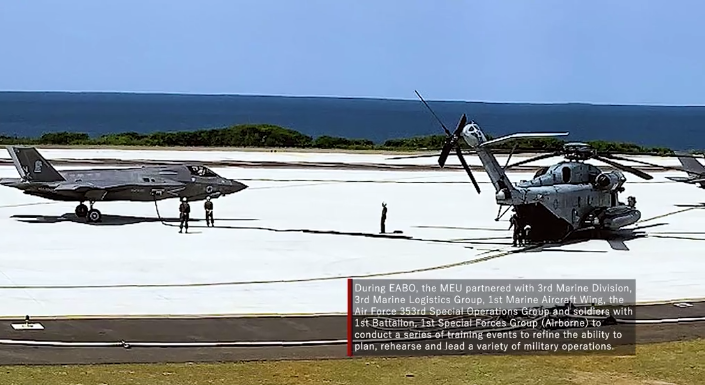

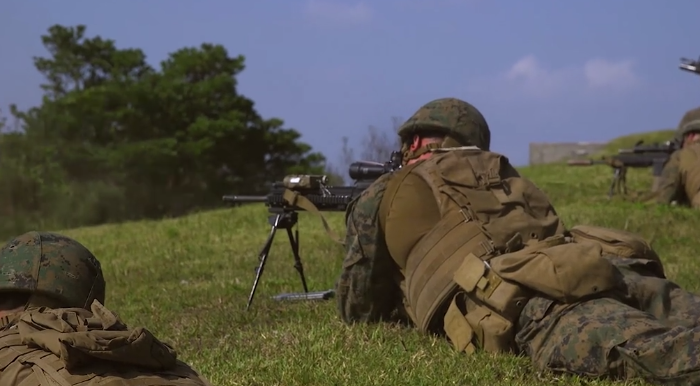
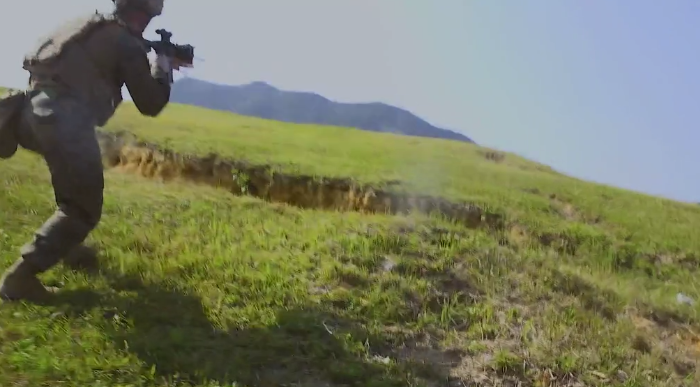
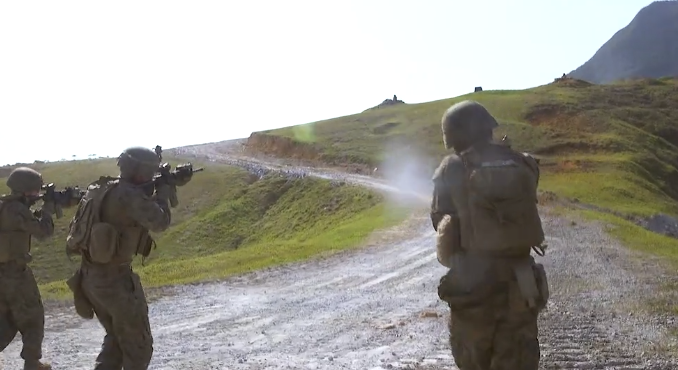

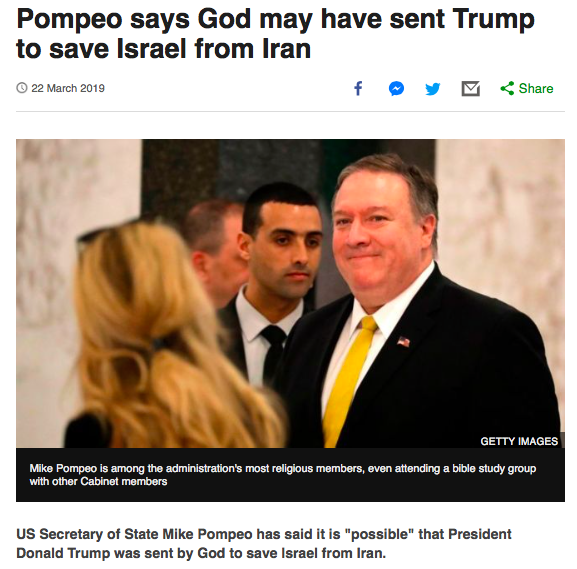
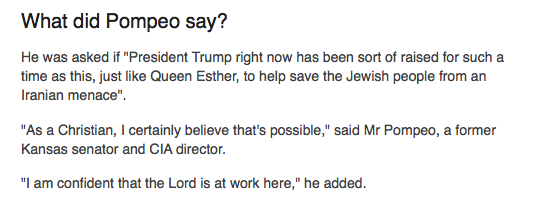


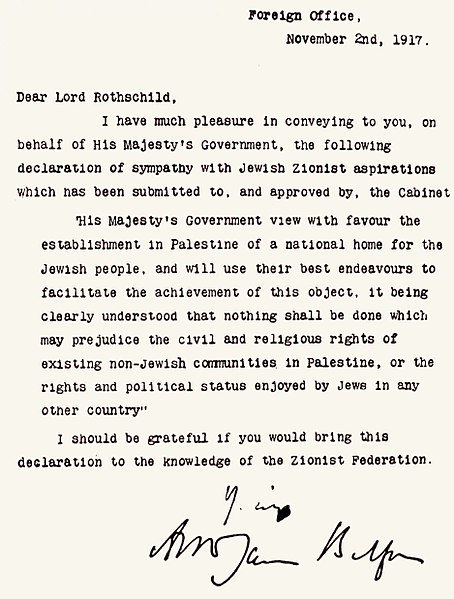


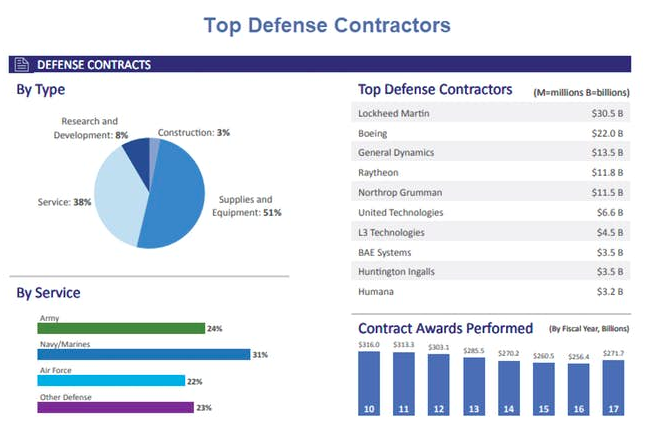
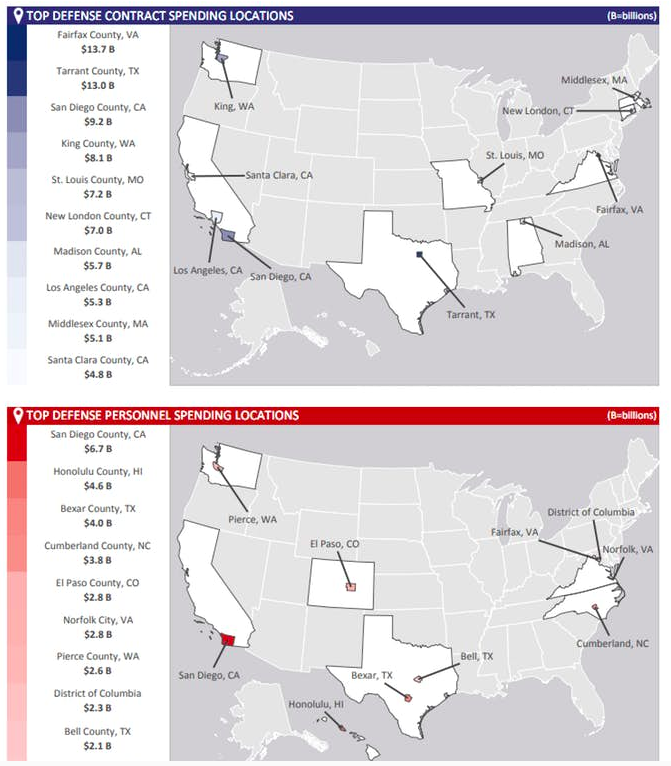
 (…)
(…)




 Can you
Can you 





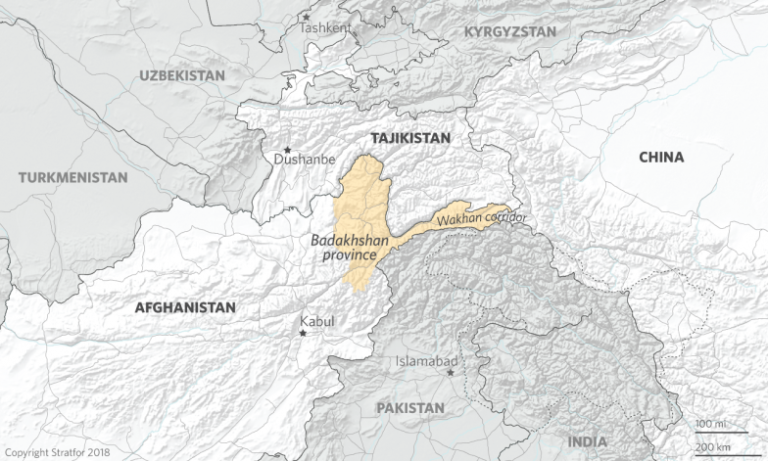
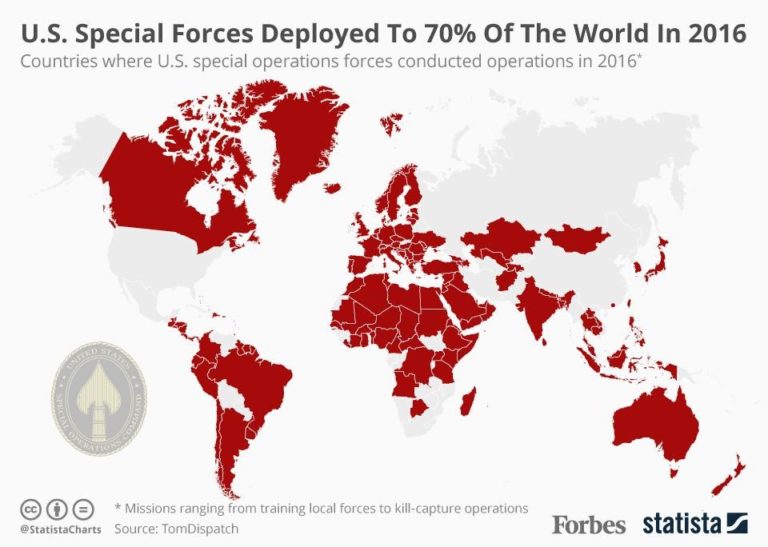
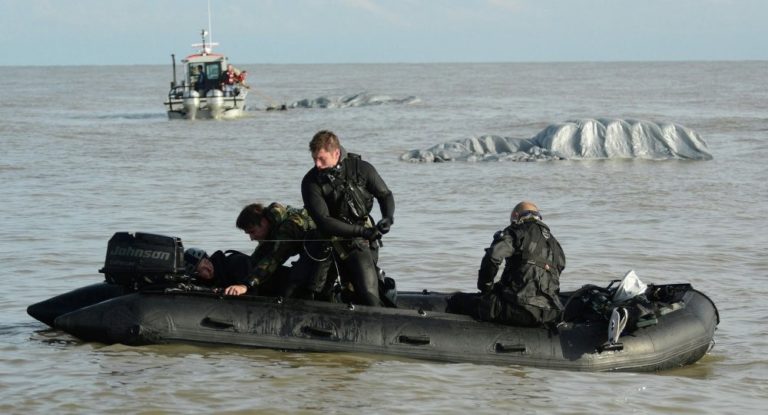
![Alexander Hamilton and the Origins of the Fed by [Rasmus, Jack]](https://images-na.ssl-images-amazon.com/images/I/41MlaHwHA9L.jpg)
